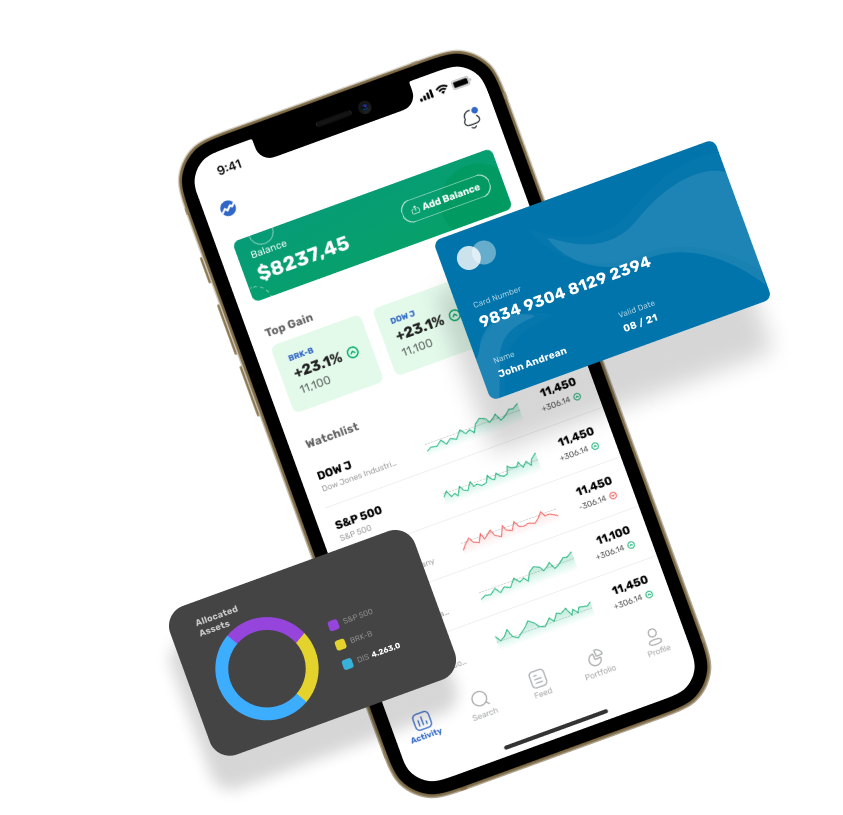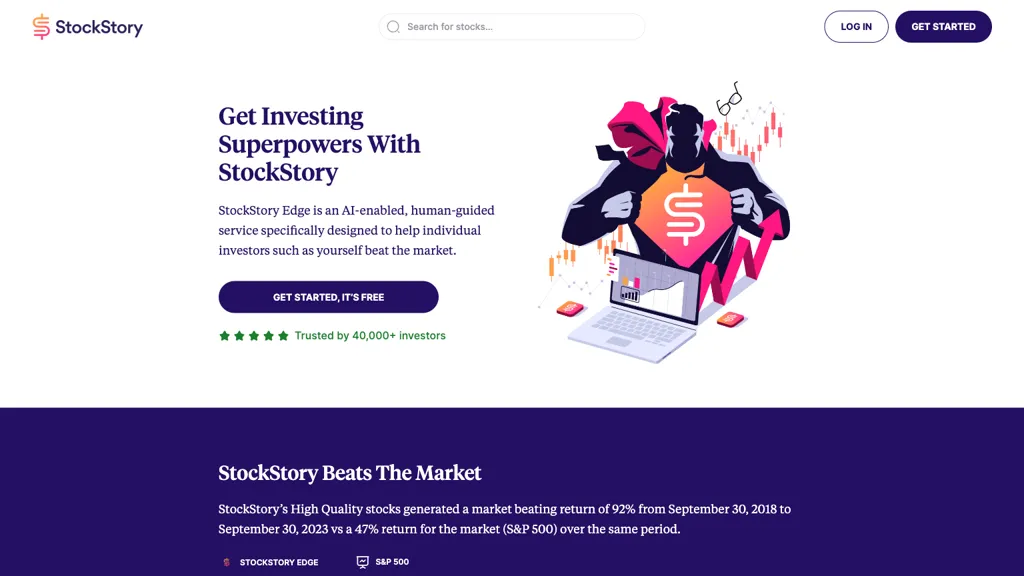It is crucial to evaluate the AI and Machine Learning (ML) models that are employed by stock and trading prediction platforms. This will ensure that they deliver accurate, reliable and practical insight. Incorrectly designed models or those that oversell themselves could result in inaccurate predictions as well as financial loss. Here are 10 top strategies for evaluating AI/ML models that are available on these platforms.
1. Learn about the purpose of the model and the way to apply it.
Clear objective: Determine whether the model was created to be used for trading in the short term, long-term investing, sentiment analysis, or risk management.
Algorithm Transparency: Verify if the platform is transparent about what kinds of algorithms are employed (e.g. regression, neural networks for decision trees, reinforcement-learning).
Customizability. Examine whether the parameters of the model can be adjusted to fit your specific trading strategy.
2. Assess model performance by analyzing the metrics
Accuracy. Examine the model's ability to forecast, but do not rely on it alone since this could be inaccurate.
Precision and recall: Evaluate how well the model identifies real positives (e.g. accurately predicted price changes) and minimizes false positives.
Risk-adjusted returns: Assess if the model's predictions lead to profitable trades after taking into account the risk (e.g., Sharpe ratio, Sortino ratio).
3. Test the model with Backtesting
Performance history The model is evaluated using historical data in order to assess its performance in the previous market conditions.
Testing on data other than the sample is essential to avoid overfitting.
Analyzing scenarios: Evaluate the model's performance during different market conditions (e.g., bear markets, bull markets and high volatility).
4. Make sure you check for overfitting
Overfitting: Watch for models that are able to perform well using training data but don't perform as well with data that has not been observed.
Regularization methods: Check the application uses methods like regularization of L1/L2 or dropout to prevent overfitting.
Cross-validation (cross-validation) Check that the platform is using cross-validation for assessing the generalizability of the model.
5. Assess Feature Engineering
Relevant Features: Check to see whether the model includes significant characteristics. (e.g. volume prices, technical indicators, prices as well as sentiment data).
Selection of features: You must be sure that the platform is selecting features that have statistical value and avoid unnecessary or redundant information.
Updates to features that are dynamic: Check whether the model is able to adapt to changing market conditions or to new features as time passes.
6. Evaluate Model Explainability
Interpretation: Make sure the model is clear in explaining the model's predictions (e.g., SHAP values, feature importance).
Black-box models: Beware of platforms that use overly complex models (e.g., deep neural networks) without explanation tools.
User-friendly insights: Make sure that the platform offers actionable insights in a form that traders can comprehend and use.
7. Test the ability to adapt your model
Market shifts: Find out whether the model can adapt to new market conditions, like economic shifts and black swans.
Continuous learning: See if the model is updated often with fresh data to increase the performance.
Feedback loops - Make sure that the platform integrates real-world feedback and user feedback to improve the system.
8. Check for Bias or Fairness
Data bias: Make sure the data used for training is a true representation of the market and without biases.
Model bias: Determine whether the platform monitors the biases in the model's prediction and if it mitigates them.
Fairness - Ensure that the model you choose to use isn't biased towards or against specific stocks or sectors.
9. Calculate Computational Efficient
Speed: Check whether the model can make predictions in real-time or with minimal latency, especially for high-frequency trading.
Scalability: Check if the platform is able to handle large amounts of data with multiple users, and without any performance loss.
Resource usage: Examine to see if your model is optimized to use efficient computing resources (e.g. GPU/TPU utilization).
10. Review Transparency and Accountability
Model documentation: Ensure the platform is able to provide detailed documentation on the model's architecture as well as its training process, as well as limitations.
Third-party audits : Check if your model has been validated and audited independently by a third party.
Verify if there is a mechanism in place to detect errors or failures in models.
Bonus Tips
User reviews and case studies User feedback is a great way to gain a better understanding of the performance of the model in real world situations.
Trial period: Try the software for free to see how accurate it is as well as how simple it is to use.
Support for customers: Ensure that the platform provides robust support for technical or model problems.
The following tips can assist you in assessing the AI models and ML models available on platforms that predict stocks. You'll be able determine whether they are trustworthy and trustworthy. They should also align with your goals for trading. Follow the best ai trading info for site examples including ai investing platform, ai for stock trading, ai for investment, market ai, ai for stock predictions, ai trading tools, best AI stock, using ai to trade stocks, AI stock market, AI stocks and more.

Top 10 Tips For Evaluating Regulatory Compliance With Ai Stock Predicting/Analyzing Trading Platforms
When looking at AI trading platforms, compliance with regulatory requirements is a crucial aspect. Compliance assures that a platform adheres to financial regulations and operates within legal frameworks while safeguarding user information. This reduces the risk of financial penalties or legal issues. These are the top 10 guidelines for evaluating regulatory compliance.
1. Check your license and registration
Regulators: Confirm that the platform is registered and licensed by the relevant financial regulatory authority (e.g. SEC, FCA, ASIC, etc.) in your country.
Broker partnership: Ensure that the brokers who are integrated into the platform are licensed.
Public records: You can look on the official website of the regulator to find out whether the platform has been registered and whether there have had any violations over the years.
2. Assessment of Data Privacy Compliance
GDPR: Ensure that your platform is compliant with the General Data Protection Regulation.
CCPA : California Consumer Privacy Act (CCPA) compliance must be checked by the users.
Data handling policy: Ensure you read the privacy policies to learn the ways in which data of users is collected and stored.
3. Evaluation of Anti-Money Laundering Measures
AML policies: Make sure the platform is able to abide by AML policies that are in place to detect and prevent cash laundering.
KYC procedures. Check if your platform follows Know Your Customer processes for verifying user identity.
Transaction monitoring Check if your platform monitors all transactions for suspicious activity and informs authorities.
4. Check for your compliance with Trading Regulations
Market manipulation: Check that the platform is equipped with measures to protect against manipulating the market, for example, spoofing and wash trading.
Order types: Confirm that the platform meets regulations regarding order types (e.g., no illegal stop-loss hunting).
Best execution: Check to determine if the platform follows the best execution practices to ensure that trades will be executed at the cheapest cost.
5. Cybersecurity Assessment
Data encryption. Your platform should use encryption to protect user data both in transit and at the rest.
Response to incidents: Verify if the platform has a clearly defined incident response strategy for data breaches or cyberattacks.
Certifications: Verify if the platform has cybersecurity certifications.
6. Examine Transparency and Disclosure
Disclosure of fees. Make sure that all charges and fees are clearly stated, as well as any hidden charges or fees.
Risk disclosure - Make sure that the platform has clear information on risk. This is especially important when trading strategies have high leverage or risk.
Performance reporting: Verify that the platform provides honest and precise reports regarding its AI models.
7. Verify that you are in conformity with international regulations.
International trading When you trade internationally, make sure that the platform is compliant to all laws and regulations.
Tax reporting: See if the platform offers tools or reports to assist users to comply with tax regulations.
Sanctions compliance: Ensure that the platform complies with international sanctions and does permit trading only with nations or entities banned.
8. Assess Audit Trails and Record-Keeping
Transaction records: Make sure that the platform maintains detailed records for regulatory purposes and audit purposes.
User activity logs - Make sure that the platform records every user's activity such as logins to the platform, trades executed and any modifications to account settings.
Audit readiness: Determine if your platform can provide the necessary logs and documentation in the case of an inspection by a regulatory agency.
9. Verify compliance with AI-specific regulations.
Algorithmic Trading Rules If your platform allows algorithmic trades, make sure it is compliant with the rules such as MiFID II (in Europe) or Reg SCI (in the U.S.).
Fairness and Bias: Ensure that the platform is monitoring and reduces biases within its AI models in order to ensure fair trading.
Explainability - Make sure that the system can provide clear and concise explanations about AI-driven predictions, decisions, etc. in accordance with certain rules.
10. Review user feedback and regulatory history
User reviews: Make use of feedback from users to assess the platform's regulatory compliance.
Check the history of regulatory compliance to determine whether any violations of the regulations have been committed, as well as fines and penalties.
Third-party audits: Determine if the platform undergoes regular third-party audits to ensure compliance with the regulations.
Bonus Tips
Legal consultation: Consult a lawyer to ensure that the platform is in compliance with all applicable regulations.
Trial period: Try the platform free of charge or try the demo to test out its compliance features as well as the documentation.
Customer Support: Ensure that the platform provides customer support for any questions or issues related to compliance.
These tips will help you evaluate the compliance with regulations for an AI stock-Predicting/Analyzing trading platform. You will be able choose a system that complies with legal frameworks while protecting your interests. Compliance not only reduces the risk of legal violations, but it also helps build trust and confidence in the services of the platform. Read the best ai for trading stocks blog for blog tips including ai options trading, stocks ai, best ai trading platform, chart ai trading, ai software stocks, ai share trading, chart ai trading, AI stock investing, trading ai tool, chart ai trading and more.
